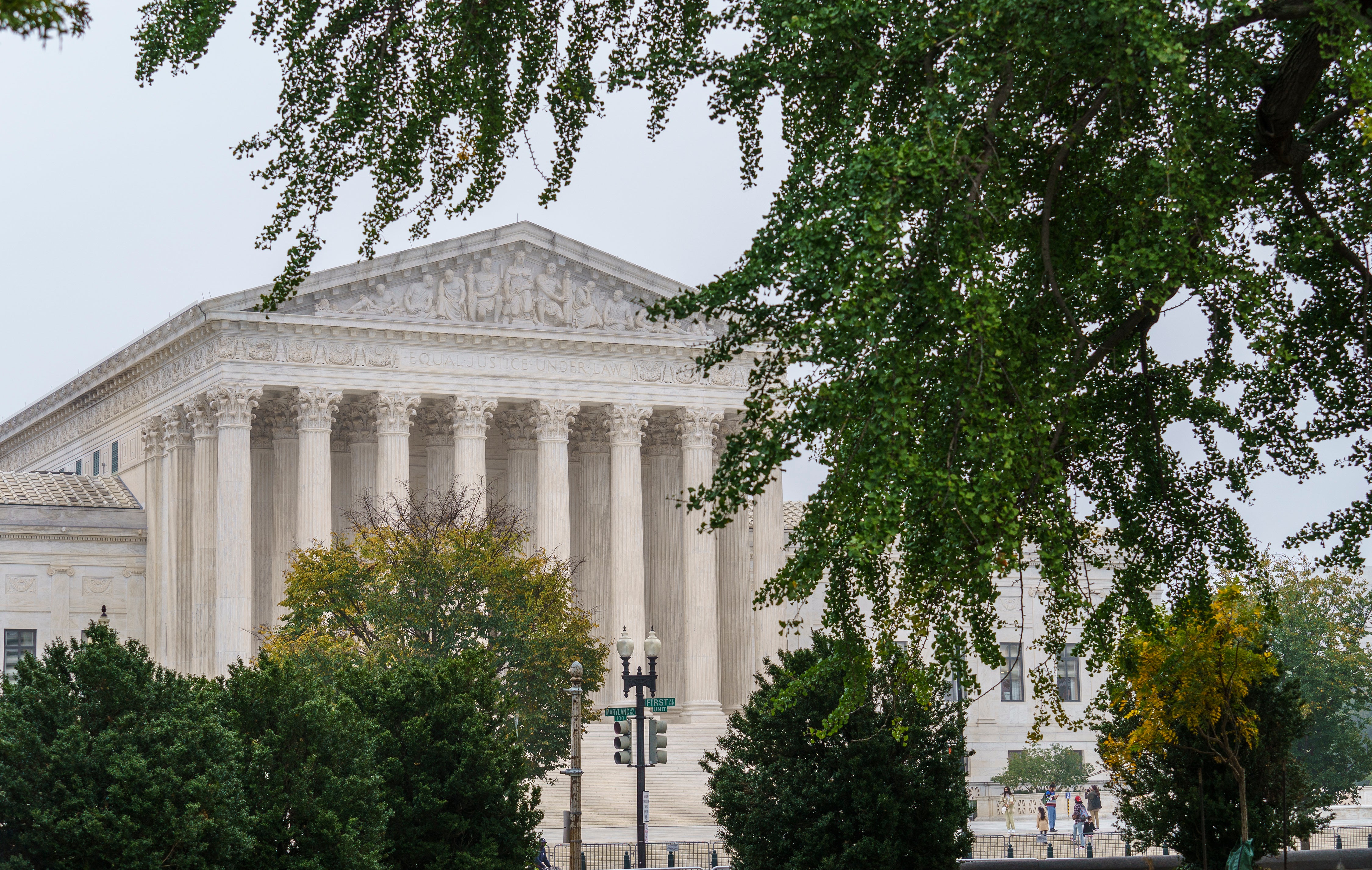If 2020 is like 2000, Trump believes he's got the votes
More than 81 million Americans have already voted in the presidential election, but President Donald Trump thinks he can count on one hand the votes that will determine the outcome

Your support helps us to tell the story
From reproductive rights to climate change to Big Tech, The Independent is on the ground when the story is developing. Whether it's investigating the financials of Elon Musk's pro-Trump PAC or producing our latest documentary, 'The A Word', which shines a light on the American women fighting for reproductive rights, we know how important it is to parse out the facts from the messaging.
At such a critical moment in US history, we need reporters on the ground. Your donation allows us to keep sending journalists to speak to both sides of the story.
The Independent is trusted by Americans across the entire political spectrum. And unlike many other quality news outlets, we choose not to lock Americans out of our reporting and analysis with paywalls. We believe quality journalism should be available to everyone, paid for by those who can afford it.
Your support makes all the difference.More than 81 million Americans have already voted in the presidential election, but President Donald Trump thinks he can count on one hand the votes that will determine the outcome.
“I think this will end up in the Supreme Court,” Trump said last month of the election.
The justices have already tackled issues involving voting in more than half a dozen states On Friday, the president on Twitter sharply criticized their decision involving an extended deadline for receiving mailed-in ballots in North Carolina as “CRAZY and so bad for our Country."
His disapproving comments highlight the tension between the law and politics that Chief Justice John Roberts has long said he would like to see the court avoid. Two years ago, Roberts issued a rare public rebuke of Trump for suggesting that judges are loyal to the presidents who appoint them.
Still, if the election hangs on a razor-thin number of ballots and an election-deciding case were to land in front of the justices, Trump likes his chances of getting five votes to win. That's because with the addition of Justice Amy Coney Barrett this week, conservatives now hold six of the court's nine seats. And Trump gave three of those conservatives their jobs.
An election-deciding case isn't far-fetched, either, of course. Two decades ago, when the disputed 2000 election came down to Florida, the court voted 5-4 along ideological lines to essentially settle the election in favor of Republican George W. Bush.
In this presidential election cycle, the high court already has been pulled into fights surrounding voting, and both parties and the president acknowledge an environment ripe for additional legal challenges. So far, the high court has been asked to rule on a flurry of election-related cases where Republicans have challenged and Democrats defended the loosening of voting rules because of the coronavirus pandemic. More litigation is likely ahead, a reason Trump pushed to get Barrett confirmed quickly so she could be on the court before Nov. 3.
Of course, any challenges could also have little impact if either Trump or former Vice President Joe Biden wins decisively.
So far, the high court has dealt with election cases involving Alabama, Maine, Montana, Rhode Island, and South Carolina. And just in the last two weeks, the court sided with Republicans to prevent Wisconsin from counting mailed ballots that are received after Election Day. But the court gave Democrats wins by leaving in place extended timelines for receiving ballots in North Carolina and Pennsylvania.
Neither the North Carolina nor the Pennsylvania case is fully resolved, however. In Pennsylvania, the justices left open the possibility they could take up and decide after the election whether a three-day extension to receive and count absentee ballots ordered by the state's high court was proper.
The issue would take on enormous importance if Pennsylvania turns out to be the crucial state in the election and the votes received between Nov. 3 and Nov. 6 are potentially decisive.
“It has the makings of a perfect storm," University of Iowa law professor Derek Muller said of the situation in Pennsylvania.
Ballots received in Pennsylvania's three-day window will be separated out so those votes can be distinguished. A similar situation is unfolding in Minnesota, where ballots received after Election Day will be separated because a court fight over them is ongoing.
In addition to ballots arriving after Election Day, the drop boxes used to collect ballots, signature match for requirements for mail-in ballots and ballots returned without the ballot secrecy envelope could all be topics for post-election legal challenges.
In recent weeks, Trump has also falsely asserted that voting by mail is proving to be rife with problems and made the unrealistic demand that all votes be counted election night. His sowing of distrust in the integrity of the election could set up additional court fights.
The Supreme Court that Trump is counting on, however, looks different from the one that decided Bush v. Gore in 2000. Only two members of that court remain, conservative Justice Clarence Thomas and liberal Justice Stephen Breyer. Three others — Roberts, Barrett and Justice Brett Kavanaugh — were lawyers who helped Bush's side in the case.
Stanford professor Nathaniel Persily, an expert in election law, said the country isn't ready for a repeat of 2000.
“If it’s a Bush v. Gore scenario, with 500 votes separating the candidates, our political institutions and political parties are not prepared for that situation right now,” he said.